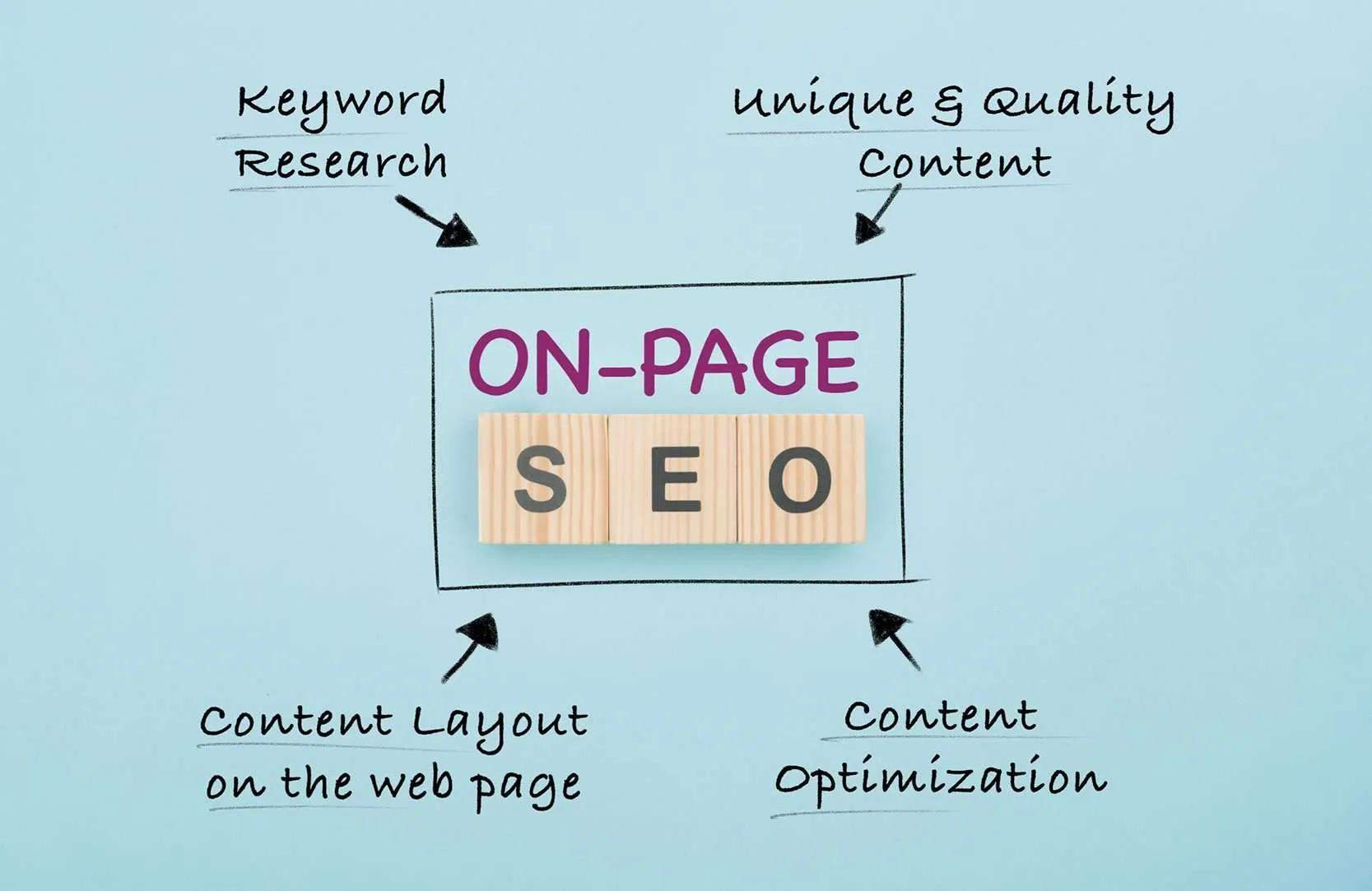In the ever-evolving digital landscape, the quest for higher search engine rankings can often feel like navigating a labyrinth. With thousands of websites vying for attention, understanding the intricacies of Search Engine Optimization (SEO) has never been more crucial. Fortunately, you don’t need to be a tech wizard to climb the ranks; a few essential strategies can make a world of difference. In this listicle, we’ll explore four key SEO optimization tips that can help elevate your online presence. Whether you’re a seasoned marketer or a budding blogger, these actionable insights will empower you to enhance your website’s visibility and attract the audience you deserve. Join us as we unlock the secrets to climbing the SEO ladder!
1) Conduct Thorough Keyword Research: The foundation of effective SEO lies in understanding what your audience is searching for. Utilize tools like Google Keyword Planner and SEMrush to identify high-traffic keywords relevant to your niche. Prioritize long-tail keywords, as they tend to have less competition and can drive targeted traffic to your website
To build a strong SEO strategy, diving deep into keyword research is crucial. Understanding the language your audience uses when searching for information will provide invaluable insights into their needs and interests. Tools like Google Keyword Planner and SEMrush can unveil potential keywords, exposing both high-traffic terms and hidden gems with less competition. As you compile your list, focus on strategically integrating long-tail keywords—these phrases usually consist of three or more words and can effectively target niche audiences, ultimately driving more qualified traffic to your site.
As you navigate the world of keywords, consider the following tips:
- Analyze Search Intent: Understand the reason behind a user’s search query; this could be informational, navigational, or transactional.
- Monitor Trends: Keep an eye on trending topics within your niche to adapt your keyword strategy dynamically.
- Check Competitor Keywords: Identify which keywords your top competitors rank for and consider how you can differentiate or improve upon their strategies.
A well-structured approach can also be enhanced by taking advantage of a simple keyword ranking table as follows:
| Keyword | Search Volume | Competition Level |
|---|---|---|
| “Digital Marketing Tips” | 8,100 | Medium |
| “Affordable SEO Services” | 2,400 | Low |
| “Best SEO Strategy for Blogs” | 1,300 | Medium |
By leveraging insights from this research, you can create content that resonates with your audience and meets their specific queries. Consistently refining your keyword strategy will not only enhance your SEO performance but also establish your authority in your chosen niche.

2) Optimize Your On-Page Elements: Ensure that each page of your website is optimized for both search engines and users. This includes crafting compelling title tags, using header tags appropriately, and incorporating your target keywords naturally within the content. Don’t forget to optimize your meta descriptions, as they play a crucial role in enticing users to click through from search results
To effectively engage both search engines and users, it’s crucial to meticulously craft your on-page elements. Start with title tags, as they are the first impression users will have of your page in search results. Make sure they are not only descriptive but also contain your targeted keywords, ideally placing them toward the beginning. Use header tags (H1, H2, H3) strategically to structure your content, ensuring that the hierarchy is clear and easy to follow. This approach not only aids in user navigation but also helps search engines understand the context of your content better. Remember to include your keywords naturally without overstuffing, ensuring a seamless reading experience.
Don’t overlook the impact of meta descriptions in your on-page optimization strategy. These brief summaries, which typically appear beneath your title tags in search results, should compel users to click through to your site. A compelling meta description includes a call to action and related keywords that resonate with users’ search intents. Below is a simple table summarizing key elements to optimize on each page:
| Element | Description | Best Practice |
|---|---|---|
| Title Tag | The main title of a page displayed in search results. | Use primary keywords at the start. |
| Header Tags | Organizes content structure. | Use H1 for main title, H2 for sub-headings. |
| Meta Description | A summary of the page content. | Incorporate keywords with a strong call to action. |

3) Improve Your Websites Loading Speed: A slow-loading website can lead to high bounce rates and negatively impact your search rankings. Use tools like Google PageSpeed Insights to evaluate your site’s performance and implement the suggested improvements. Consider optimizing images, leveraging browser caching, and minimizing unnecessary scripts to enhance user experience and SEO simultaneously
When it comes to enhancing your website’s visibility on search engines, speed is paramount. A slow-loading website not only frustrates users but can also lead to significantly higher bounce rates, where visitors leave before engaging with your content. To assess your site’s performance, utilize tools like Google PageSpeed Insights, which provide valuable insights into how your site ranks in terms of loading speed. It’s crucial to act on these suggestions to streamline your site for both users and search engines alike.
To effectively improve loading speed, consider the following strategies:
- Optimize Images: Compress high-resolution images without sacrificing quality to reduce load times.
- Leverage Browser Caching: Enable caching so that returning visitors can load pages faster, as some elements will be stored locally.
- Minimize Unnecessary Scripts: Review your site for superfluous scripts and plugins, and eliminate the ones that don’t add value or are seldom used.
Additionally, here’s a simple table to illustrate the impact of optimized elements on loading times:
| Optimization Technique | Estimated Speed Increase |
|---|---|
| Image Optimization | up to 50% |
| Browser Caching | up to 75% |
| Script Minimization | up to 40% |
By implementing these tactics, not only will you create a smooth user experience, but you will also boost your SEO efforts, improving your chances of higher search rankings.
4) Build Quality Backlinks: Earning backlinks from reputable websites is key to boosting your sites authority and search rankings. Focus on creating high-quality, shareable content that naturally attracts backlinks. Additionally, consider guest blogging and networking with influencers in your industry to foster relationships that can lead to valuable link-building opportunities
Building high-quality backlinks is crucial for enhancing your website’s authority and improving search engine rankings. To effectively attract these valuable links, focus on creating engaging, informative, and shareable content that naturally draws in attention. This might include elements like data-driven articles, impactful infographics, or in-depth guides that resonate with your audience. When your content delivers real value, it increases the likelihood that other reputable sites will link back to yours, significantly boosting your credibility in the eyes of search engines.
In addition to content creation, consider strategies such as guest blogging and networking within your industry. Guest blogging allows you to showcase your expertise on established platforms, while fostering relationships with influencers can lead to collaborative opportunities that benefit both parties. Here’s a brief overview of effective strategies for building backlinks:
| Strategy | Description |
|---|---|
| High-Quality Content | Creating valuable content that other sites want to share. |
| Guest Blogging | Contributing to reputable blogs in your niche. |
| Influencer Networking | Building relationships with industry leaders for mutual benefits. |
| Resource Pages | Getting your content listed on pages that compile useful resources. |
By implementing these strategies and committing to high-quality content, you’ll not only enhance your backlink profile but also cultivate a strong online presence that encourages ongoing engagement and growth.
In Summary
As we wrap up our exploration of these four essential SEO optimization tips, remember that the digital landscape is ever-evolving. Staying ahead of search engine algorithms can feel like navigating a labyrinth, but with the right strategies in your toolkit, you can confidently find your way to higher rankings.
By focusing on quality content, optimizing your keywords, enhancing site speed, and building authoritative backlinks, you’re not just improving your visibility—you’re creating a more enriching experience for your audience. Each of these elements harmonizes to form a stronger online presence, making it easier for users to discover your insights or services.
So, take these tips, put them into practice, and watch as your website climbs the ranks. The journey of SEO may be intricate, but with persistence and strategy, success is within reach. Here’s to your growth, visibility, and digital triumph! Happy optimizing!




